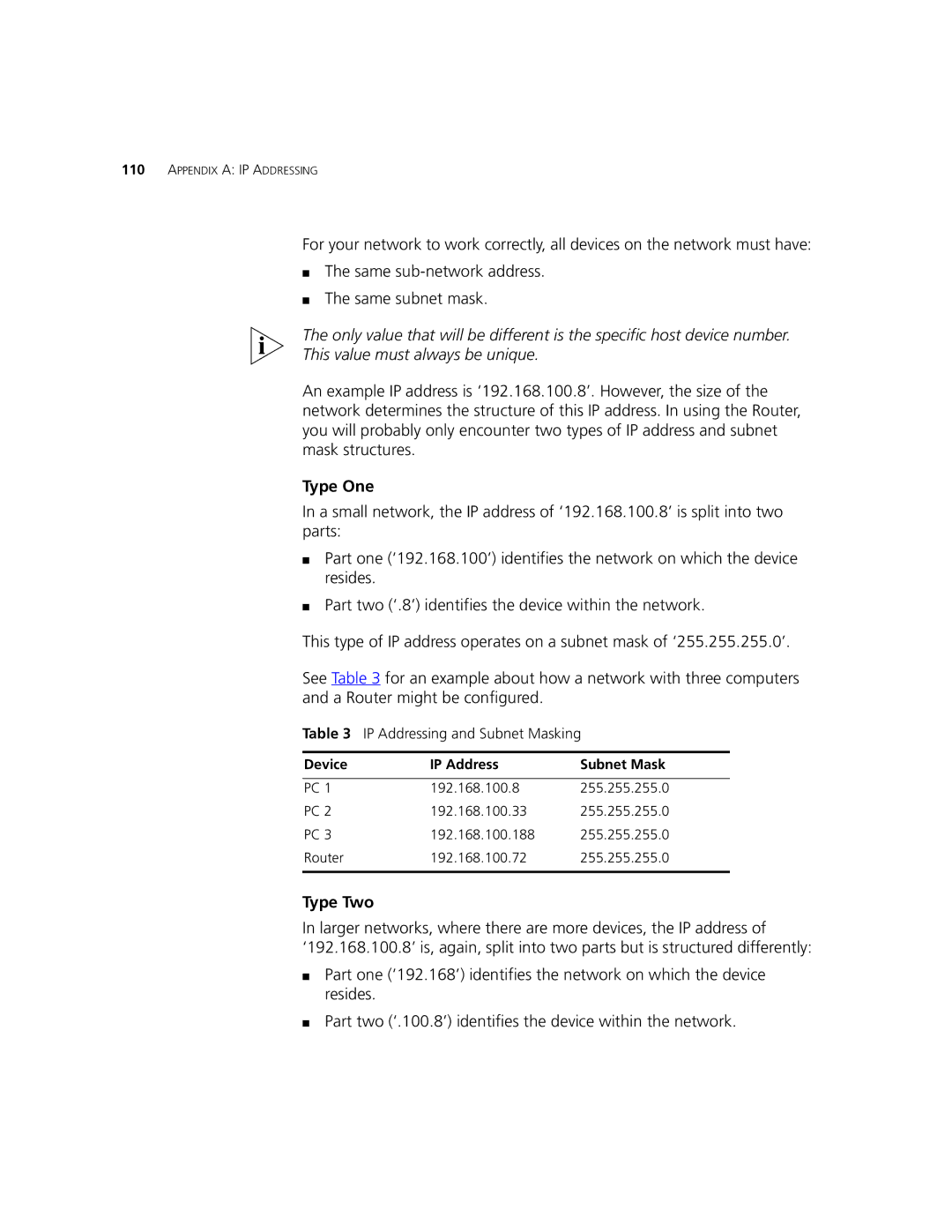
110APPENDIX A: IP ADDRESSING
For your network to work correctly, all devices on the network must have:
■The same
■The same subnet mask.
The only value that will be different is the specific host device number.
This value must always be unique.
An example IP address is ‘192.168.100.8’. However, the size of the network determines the structure of this IP address. In using the Router, you will probably only encounter two types of IP address and subnet mask structures.
Type One
In a small network, the IP address of ‘192.168.100.8’ is split into two parts:
■Part one (‘192.168.100’) identifies the network on which the device resides.
■Part two (‘.8’) identifies the device within the network.
This type of IP address operates on a subnet mask of ‘255.255.255.0’.
See Table 3 for an example about how a network with three computers and a Router might be configured.
Table 3 IP Addressing and Subnet Masking
Device | IP Address | Subnet Mask |
|
|
|
PC 1 | 192.168.100.8 | 255.255.255.0 |
PC 2 | 192.168.100.33 | 255.255.255.0 |
PC 3 | 192.168.100.188 | 255.255.255.0 |
Router | 192.168.100.72 | 255.255.255.0 |
|
|
|
Type Two
In larger networks, where there are more devices, the IP address of ‘192.168.100.8’ is, again, split into two parts but is structured differently:
■Part one (‘192.168’) identifies the network on which the device resides.
■Part two (‘.100.8’) identifies the device within the network.
